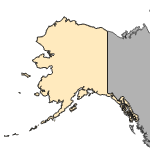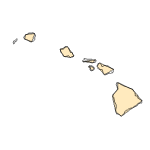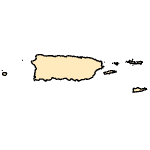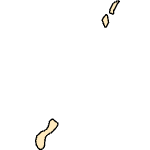Amaranthus cannabinus
(tidalmarsh amaranth)
Plants
Native Transplant |
|
Common name: tidalmarsh amaranth
Synonyms and Other Names: Acnida cannabina, Saltmarsh water-hemp, tidal marsh water-hemp, water-hemp pigweed
Taxonomy: available through
www.itis.gov
Identification: Amaranthus cannabinus is a herbaceous (non-woody) plant species. The male and female reproductive organs occur on different plants (dioecious) (Bram 2002). It is distinguishable from other dioecious species in the genus because it is a perennial (plants regrow year after year) (Robertson 1981). Female flowers generally have 3-5 stigmas, no sepals, and a single ovum that develops into a utricle (air-filled cavity) (Bram 2002, Quinn et al. 2000). Male flowers have 5 anthers, 5 sepals, and 5 stamens (Bram 2002, Quinn et al. 2000).
Size: stems 1-3 m, flowers are 2-3 mm (Bram 2002)
Native Range: Amaranthus cannabinus is native to the Atlantic tidewater zone of the United States, ranging from Maine to North Florida and inland along the Hudson and Delaware Rivers (Robertson 1981).



|

Alaska |

Hawaii |

Puerto Rico &
Virgin Islands |

Guam Saipan |
Hydrologic Unit Codes (HUCs) Explained
Interactive maps: Point Distribution Maps
Nonindigenous Occurrences:
Coastal Louisiana
Table 1. States with nonindigenous occurrences, the earliest and latest observations in each state, and the tally and names of HUCs with observations†. Names and dates are hyperlinked to their relevant specimen records. The list of references for all nonindigenous occurrences of Amaranthus cannabinus are found here.
Table last updated 1/14/2026
† Populations may not be currently present.
Ecology: Amaranthus cannabinus is a dioecious annual herb that grows in tidal fresh and saltwater marshes and brackish wetlands where daily water fluctuation occurs (Sauer 1955). It reproduces via wind pollination and fruits and flowers in late summer (July-September) in the northern United States (Bram 2002). For a population to persist and reproduce successfully, there needs to be a significant number of adjacent plants since only half the population produces seeds (Quinn et al. 2000). Germination rates are highest in shallow water of around 1 cm, and they will break dormancy after 180 days of cold stratification (Les 2018). Black ducks (Anas rubripes) will consume the seeds of A. cannabinus (Les 2018).
Means of Introduction: Seeds are buoyant and disperse along flowing water, creating extensive seed banks (Les 2018). Seeds are viable after ingestion by waterfowl (Les 2018).
Status: Established in coastal Louisiana
Impact of Introduction: The impacts of this species are currently unknown, as no studies have been done to determine how it has affected ecosystems in the invaded range. The absence of data does not equate to lack of effects. It does, however, mean that research is required to evaluate effects before conclusions can be made.
References: (click for full references)
Bram, M.R. 2002. Effects of Inbreeding in Three Populations of the Dioecious Annual
Amaranthus cannabinus (Amaranthaceae). The Journal of the Torrey Botanical Society, 129(4), 298–310. https://doi.org/10.2307/3088701
Les, D.H. 2018. Aquatic dicotyledons of North America: ecology, life history, and systematics. CRC Press, Boca Raton, FL.
Quinn, J. A., Bram, M. R., & Taylor, T. E. 2000. Female Resource Allocation in Response to Pollen Availability in Plants from Freshwater and Salt Marsh Populations of
Amaranthus cannabinus. The Journal of the Torrey Botanical Society, 127(1), 83–86. https://doi.org/10.2307/3088749
Robertson, K.R. 1981. The genera of Amaranthaceae in the southeastern United States. J. Arnold Arbor. 62:267-314.
Sauer, J. 1955. Revision of the dioecious amaranths. Madorno 13:5-46.
Author:
Reaver, K.M.
Revision Date: 4/15/2024
Citation Information:
Reaver, K.M., 2026, Amaranthus cannabinus (L.) J.D. Sauer: U.S. Geological Survey, Nonindigenous Aquatic Species Database, Gainesville, FL, https://nas.er.usgs.gov/queries/FactSheet.aspx?speciesID=2968, Revision Date: 4/15/2024, Access Date: 1/14/2026
This information is preliminary or provisional and is subject to revision. It is being provided to meet the need for timely best science. The information has not received final approval by the U.S. Geological Survey (USGS) and is provided on the condition that neither the USGS nor the U.S. Government shall be held liable for any damages resulting from the authorized or unauthorized use of the information.